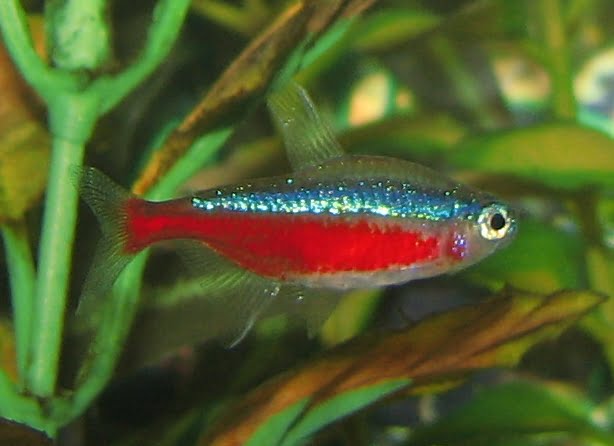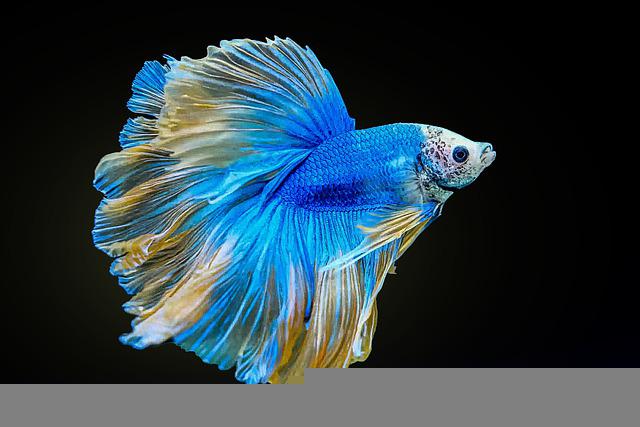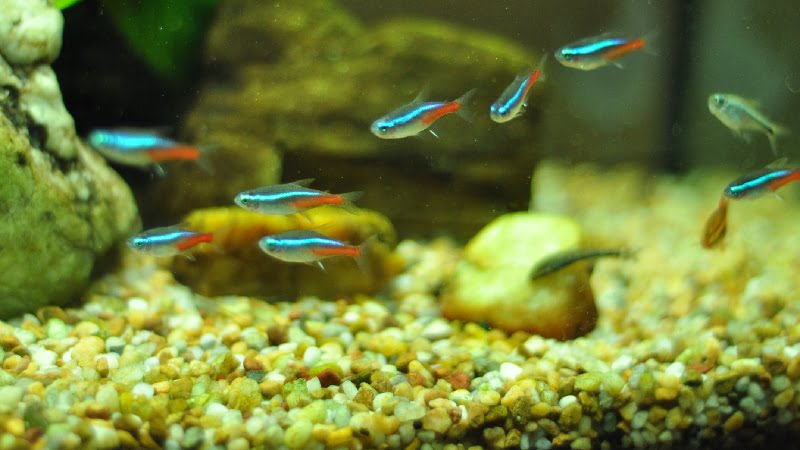If you have a betta and neon tetras, you may be wondering how to best feed them both. While bettas are carnivores and neon tetras are omnivores, there are ways to accommodate both types of fish. Here are some tips on how to feed neon tetras with a betta. Let’s scroll down and discover it now!
How To Feed Neon Tetras With Betta

This is one of the areas where observing and respecting the distinctions amongst betta fish is essential. Why? Bettas are carnivorous, but neon tetras are omnivorous. Although your neon tetras can eat whatever bettas consume, the same cannot be said for bettas and everything you feed them.
It’s a good idea to keep them on their separate diets. This is not expensive nor difficult to accomplish:
Bettas are required to consume food that originated from a living creature. This should be the primary factor that influences your choice when it comes to purchasing the finest food for betta fish. Live bait is preferable over dead bait, and there are several live bait alternatives available, including bloodworms and brine shrimp.
Keeping them healthy and happy requires a good variety of food and avoiding cheap food full of water and unnecessary additives. Daphnia is a good option as well. It is OK to eat pellets, although you should make sure the quality is the best.
Neon tetras can eat betta-like foods, but you should still try to offer them food specific to the species. When choosing neon tetra flakes, it is best to select those of exceptional quality.
Aside from this essential diet, you should also supplement it with treats that they both enjoy equally. For this case, we recommend the following:
There isn’t a wrong choice here, whether you go with live, freeze-dried, or frozen. However, it is essential to avoid abusing these prey items since, in certain instances, they can cause some health problems in your fish, such as constipation, particularly bloodworms.
Feeding Neon Tetras With Bettas: Things To Avoid

You need to avoid a few things when feeding neon tetras and bettas together. The first is to ensure that the food you are giving your neon tetras is appropriate for the tetra’s size. Neon tetras can be fed a diet that consists of small pieces of live food, while bettas will need larger chunks of food. The second thing you need to avoid is overfeeding your neon tetras. Overfeeding can lead to obesity and health problems in your fish. As a rule of thumb, feed your fish two minutes a day.
Even though you may not need to do this every day, it is recommended that you cut the food into small pieces and drop them into the water frequently. After they have finished eating, you must remember that you shouldn’t let them stay in the water for an extended period of time. It is the most critical thing to keep in mind.
Video: How I Feed My Betta Fish and Neon Tetras
FAQs
Is it possible to eat the same food as bettas and tetras?
Tetras can consume better food. Betta diet is nutritious and safe to serve to tetras since it contains a lot of protein. However, because tetras are omnivores, they require plant-based food in their daily diet. Tetras thrive on a diet of high-quality fish flakes combined with live food.
Will a betta eat a neon tetra?
Neon Tetras are notorious for nibbling on fins, whereas bettas are noted for being aggressive. Before combining the two, you should have a contingency plan in place. If at all feasible, add the tetras before the betta. Consider pairing a female betta with tetras as well.
Are tetras hard to keep?
Tetras are relatively easy to keep and may coexist with practically any other non-aggressive species. Due to their small size and nature, Tetra fish frequently school together in the aquarium. This is desirable in freshwater animals and may enhance any large aquarium.
Final Thought
After reading this article, you now know how to feed neon tetras and bettas. You also see the importance of a varied diet for each fish. Tetras need small live or frozen foods, while bettas prefer larger pellets or flakes. Both fish should have access to vegetables. By providing a variety of foods, you will ensure that your fish stay healthy and happy.

Annette M. Chaney is an experienced marine biologist with over 20 years of experience as an aquarist and fishkeeper. She started her first aquarium at a young age, filling it with frogs and goldfish obtained from the ten-cent pet store.
Annette grew up caring for and breeding African Cichlids, which led to a hobby in high school that doubled as a profitable means. Attending Reed College gave her time to solidify herself as an accomplished aquarium caretaker with an eye for sales. After that, from 2009 – 2013, she studied at Roger Williams University – one of the most prestigious universities for Aquaculture and Aquarium in USA. She is the founder of AquariumCircle since 2010.
